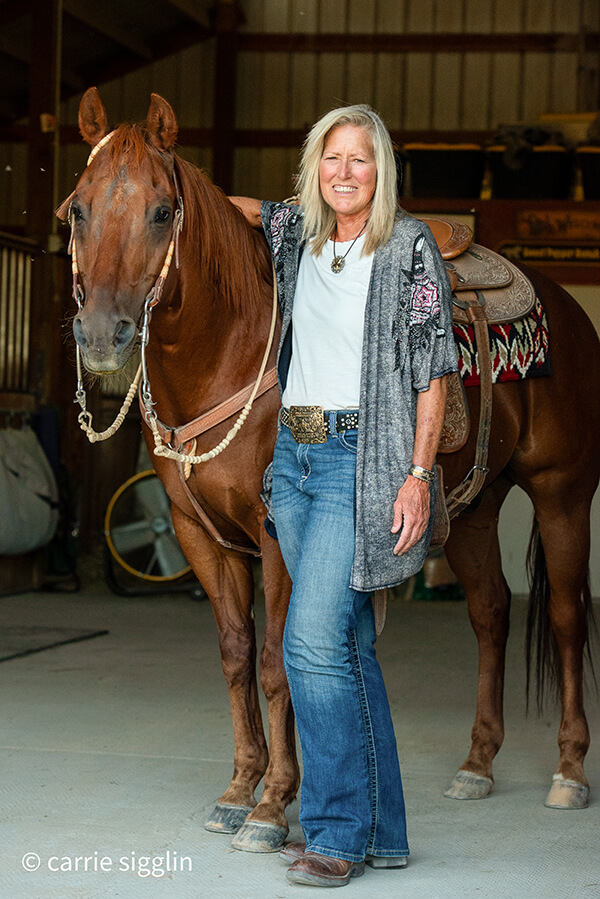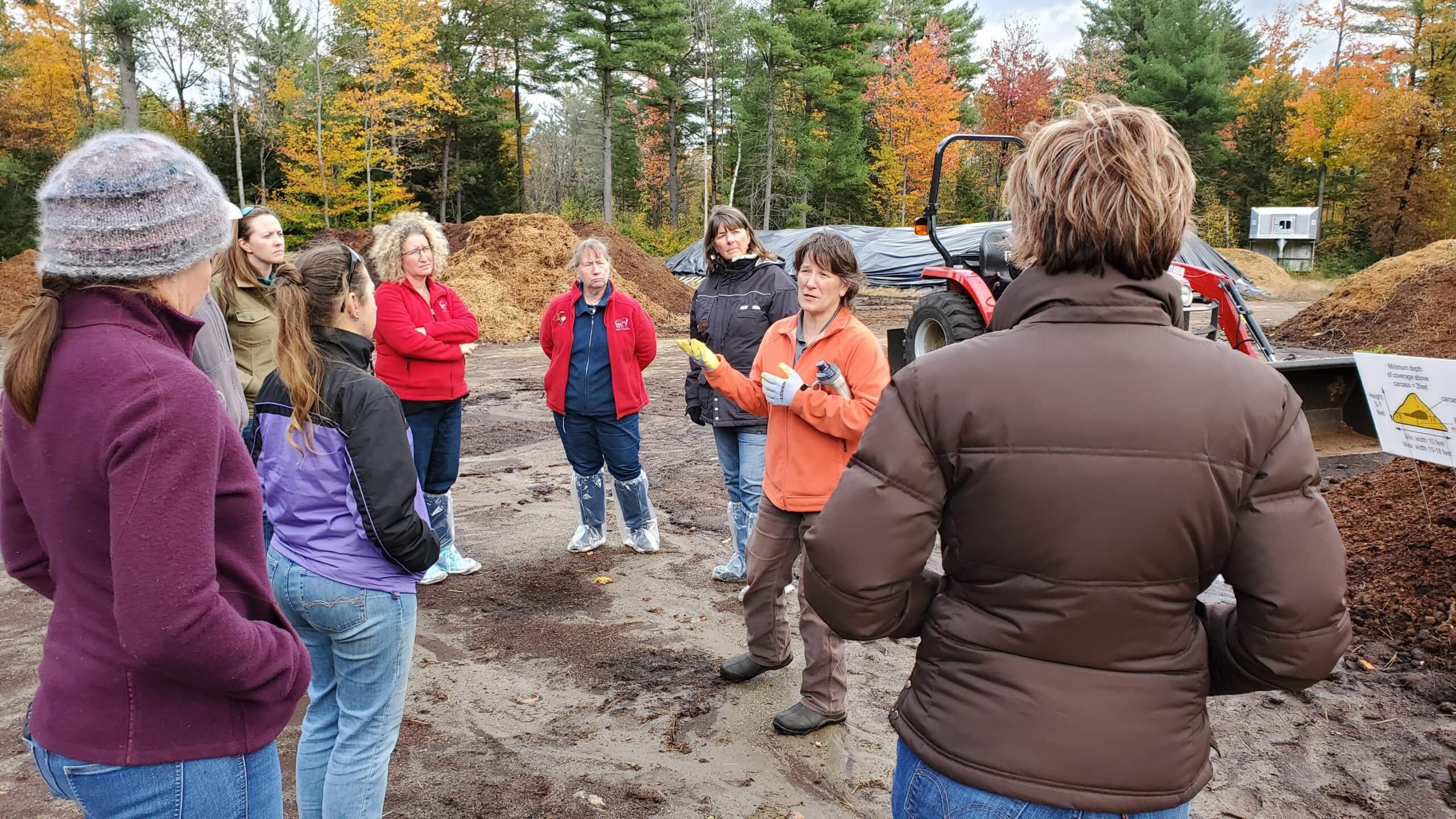This past fall I was a presenter at the Best Horse Summit in Maine. While there, I had the opportunity to tour a unique equine business, Compassionate Composting, which deals exclusively with composting dead horses.
Before you wrinkle up your nose and turn away, ponder the fact that in many places across the country there are fewer and fewer options for what can be done with a horse’s body once the horse has died.
Rendering companies are under more scrutiny to not accept carcasses of animals which have been euthanized using barbiturates such as sodium pentobarbital, the most common choice for euthanizing horses. Many states or municipalities are not allowing ground burials because of water quality concerns.
Among remaining choices are euthanasia via gunshot or captive bolt if your preference is to send your horse’s body to a rendering service. Or you could somehow transport your 1000-pound horse body to be disposed of at a landfill.
Above-ground burial—the composting of a horse’s body—might be something to consider. Composting is a biological process that aerobically breaks down carbon-based organisms—anything that used to be living—and turns it into a healthy finished material which has beneficial uses on pastures and land. It’s a much cleaner process than anerobic decomposition (which occurs at landfills) which creates the greenhouse gas methane along with other foul odors.
I talked with Michelle Melaragno, owner and founder of Compassionate Composting, in Auburn, Maine to get more information and details on her business.
How long have you been doing this and what motivated you to get into this business?
I started Compassionate Composting, an above-ground burial service for horses, in the fall of 2012. I had recently purchased some Agriculture/Resource Protection Zoned property abutting my existing property and wanted to establish an agricultural-based business.
Having experienced and heard about some horrific removal and disposal stories [of dead horses], I knew there was a significant need for a humane method that was also environmentally responsible.
As an assistant instructor for the [regional] Technical Large Animal Emergency Rescue, I am experienced in the use of specialty equipment and mechanical handling techniques of large animals. My skills merged with the land purchase and my desire to offer a more thoughtful, respectful service for horse owners. I attended the Maine Compost School and received a zoning ordinance amendment with the assistance and support of the Maine Compost Team.
There are new laws throughout the US that prohibit rendering companies from picking up bodies of horses which have been chemically euthanized. Water quality laws or concerns might also prohibit burying a horse on personal property. Other than the landfill, is composting the only other option for “disposing” of a deceased horse?
Currently, the most utilized options throughout New England include ground burial (depending on municipal and state laws), cremation, and composting. There are very few options for rendering in New England and very few (if any) landfills that accept large animal carcasses. Alkaline hydrolysis is another option but is not yet readily available. Each state has specific regulations regarding ground burial, composting, and rendering.
How does composting work with a large animal body? How long does it take to decompose? Can the owner pick up and safely use the finished compost?
Most people are familiar with backyard composting, but it’s important to note that composting large animals is a very different process. It’s a thermophilic process, (higher temperatures are achieved, between 106 – 252 degrees F) with a specific “recipe” for bulking materials and shaping windrows.
Bulking materials are the carbon-based materials used in composting to add structure to a pile—like shavings, dry leaves, landscaping materials, shredded paper or animal bedding. Windrows refer to the shape created with the bulking materials.
The bulking material we use is stall waste which is accepted onsite from horse facilities. The animal is placed on a deep bed of bulking material in a large, long windrow next to, but not touching, other animals. Then it is covered with more of the same bulking material. Standards for the shape and size of the windrow/pile must be followed.
In a properly constructed windrow, all soft tissue decomposes in four to five months; only bones remain which continue to break down at a slower pace. Temperatures are recorded to confirm that the process achieves at least 131 degrees for three consecutive days, which ensures pathogen destruction.
The location of every animal is marked, and owners can return a few months later to obtain some of the compost from that area. Occasionally, an owner opts to have a fully private above-ground burial, in which case they can get back all composted remains.
No restrictions have been placed on the use of the finished compost. Studies regarding residues of sodium pentobarbital or other drugs commonly used in horses show very little or no remaining amount in the finished compost product. I encourage owners to use the compost as a soil amendment for landscaping or flower beds, or to spread it in the fields where their horse grazed.
What kind of permitting is required for a business like yours?
Every municipality and state will have different requirements and laws. I had to go through the lengthy and expensive process of getting a zoning ordinance amendment in my town. A compost management plan is also required in Maine and must be developed with professionals such as the Maine Compost Team as well as the Department of Agriculture, Department of Environmental Protection, Extension Service and the Maine State Planning Office.
Do you provide a pick-up service? And if so, how does that work?
For the horse owner, this is the most important part of the services I offer because my approach offers a respectful and gentle handling of the horse’s body. A horse’s body is not dragged (in chains by a leg or neck) across the ground (as is the case with rendering services).
I utilize Large Animal Emergency Rescue Equipment, specifically, the Large Animal Rescue Glide, as well as large animal rescue techniques and mechanics. The Rescue Glide is essentially a horse-sized stretcher which allows for the humane and gentle handling of the horse’s body. The horse is secured to the Glide which is attached to a winch inside the trailer that pulls the Glide with the horse’s body inside the trailer.
What do you recommend equine owners in other parts of the country do when considering or selecting a composting service for their deceased horse?
I recommend the following: 1) Before a horse owner has a need, research available options in your area. 2) Check local and state laws and requirements regarding ground burial and composting. 3) If burial or composting are permitted on your property, check laws to determine setbacks from roads, structures, property boundaries, wells and other water sources.
Have horse people been receptive of Compassionate Composting?
There seems to be a growing receptivity to the concept of composting horses with this method. Horse owners generally seem very relieved to know their horse is being handled with respect and they are utilizing an environmentally responsible option. With my methods horse owners can comfortably witness the handling process and often jump in to assist, which seems to give them a peaceful sense of closure in many cases.

Alayne Blickle began in the 1990’s as a pioneer in water conservation and natural resources conservation by creating the entrepreneurial consulting business, Horses for Clean Water, an award-winning internationally acclaimed education program that looks for horse-healthy, nature-based solutions to land management challenges. She continues this work today partnering with agencies, organizations, and horse owners throughout North America and worldwide. She is a regularly contributing writer and photojournalist to several equine publications.
Alayne lives with her horse trainer husband, Matt Livengood, in southwestern Idaho where they raise and train AQHA horses and mustangs on their eco-friendly horse ranch. Contact her through the Horses for Clean Water website or through their ranch website Sweet Pepper Ranch.
For more information contact Alayne at [email protected] or 206-909-0225.






